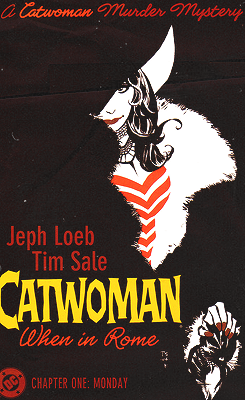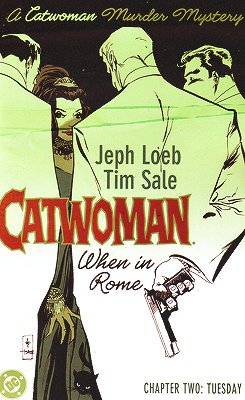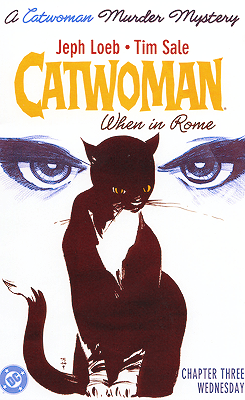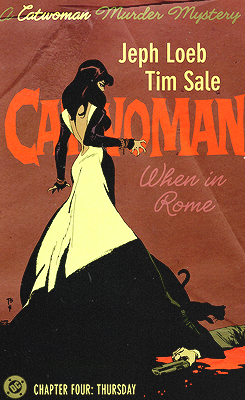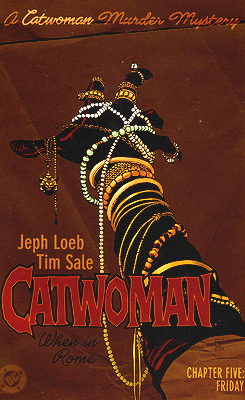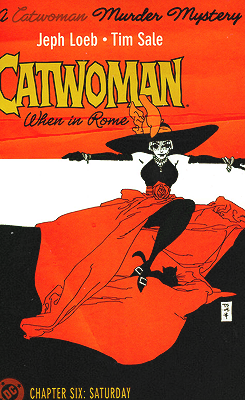Richie Literally Has Chemistry With ALL Of The Og Losers Plus Mike In The Book. Why Dont They Show Any
richie literally has chemistry with ALL of the og losers plus mike in the book. why dont they show any of that in the movie. like i get hes 'flirty' in the movie but.. in the book he held hands with mike, kept bringing up bill not stuttering all the time (a whole page was dedicated to showing how mesmerized he was about it? and he brought it up 10 pages later.), he heard a bird noise and thought "hey stan would know what kind of bird that is :)". LIKE HELLO WE GOT NONE OF THAT IN THE MOVIE. you people are sick and twisted. we got reddie in the movies and i thank god for that but really??? you are gonna deprive me of this? wow.
More Posts from Moviesarefun1 and Others
dont think ive ever seen anyone put curly’s character in a way ive liked more than this one youtube comment, so i thought i’d share it




Here is text with it as well-



I absolutely love this direct parallel. Thundercracker is always such an interesting character when he's portrayed like this - he's loyal to the Decepticon cause, but not interested in wanton destruction and death the way many other Decepticons are. He pities small weak things and finds no entertainment or honour in killing them unless he absolutely has to.
It's going to be fun seeing how his reluctance to kill for the crime of being small affects his relationships with some of the most brutal Decepticons we've seen.

just take this from me take it




Batman: the long Halloween, the last Halloween #4
That's so interesting... the way he has always been working
I have thoughts about IT Chapter 2 (2019).
I had watched the IT miniseries and then about a year later I watched IT Chapters 1 & 2. I loved Chapter 1 (and still do). I really enjoyed Chapter 2 when I first watched it, and there are still parts that I really like. I have since watched both movies and the miniseries several times, and read the book. And I’ve come to the conclusion that I don’t like Chapter 2 as an interpretation of the story.
As a one-to-one adaptation of the book, the miniseries is better than the movies. That’s an indisputable fact, and also not necessarily what the movies were trying to do. The change in setting (1950’s to 1980’s) does change the way that the characters are presented. I actually really like this, and will almost certainly make a separate post about it someday. The way that Bill Denbrough is presented in the movies, however, is just inconsistent with his character. In the book, he is the leader of the Losers. They all look up to him and respect him. They all genuinely love him and he genuinely loves them back. Every single Loser almost worships Bill, to the point that the book even comments that he’s the only person Ben wouldn’t be jealous of if Beverly dated. And Bill is aware of his friends, even if he is still asking them to do dangerous things. Still his characterization in Chapter 1, while off, doesn't ruin things nearly as much as the mess that Chapter 2 becomes.
So IT is a beast of a book to read. It’s long and the dual story structure is written concurrently, meaning that it jumps from kids to adults randomly. The miniseries keeps this to an extent. I think separating the two stories is smart, but having the two run concurrently does allow the reader to see that though the structure seems circular the characters have grown. They are adults the second time they face Pennywise, and have different priorities and fears. And they have to figure out how to defeat Pennywise as these new versions of themselves. And, yes, Chapter 2 does this, for everyone except Bill. Because in the book, Bill actually cares about his wife, Audra, who follows him to Derry and gets abducted by It. In the book, Bill is a rational adult who chooses to go into the sewers, leading and with the support of his friends. He grows throughout the book, coming to realizations about what parts of him need to revert back to his childhood self versus which parts of his adult self are needed to win (the cheating bit). Which is really what each of the Losers has to do in Derry before they can defeat It.
So I am so annoyed by the choices made for Bill Denbrough in IT Chapter 2. The inclusion of a random stand-in Georgie child completely erases any capacity that Bill has for growth in the story. It keeps him in the mentality of his traumatized 13 year old self, and he acts like it. He is supposed to be the beloved leader. The Losers are supposed to rally around him, because he is everyone’s big brother/first crush. Why is he going rogue in the sewers? Why did they take the responsible leader and make him a manic loner? Why did they do Bill Denbrough so dirty? It completely ruins the integrity of the movie as an adaptation of IT.
A fun, happy dc story for a change
Look I can be very critical of Winick's writing because I'm so ambivalent about it but damn if it isn't, on a meta level, a really satisfying spite story.
At the core of this story, there is Jim Starlin. Now Starlin's writing has many flaws, not least of all the blatant racism and sexism. And if there's one thing Jim hates, it's Robin. He wants to kill that little boy so bad, oh how he hates that bright coloured child in tights that's just holding Batman back from reaching his true potential as an absolute badass... And hey, good news! Dc, in trying to bring a second Robin after the first got a new identity, has dropped the ball, and the new boy is unpopular amongst the fans who miss the previous iteration! This is his opportunity to kill Robin, definitely!
But how? People may not have voted him dead yet, but Jim is already planning, setting up plots and trying his damndest to get him killed. And the thing about Jim- the thing that makes him a good writer, you see, the thing that separates him from those losers who fail to see Batman's true potential, is that his writing is gritty. He's not afraid to write a true dark knight facing the grimdark horrors of a town laden with crime, to shy away from the real dark, gritty topic that are mature and dark like rape. And uh, sexual violence against women. And uh, serial raping and killing women. (I'm kidding, of course, I didn't forget the native american cult leader who bathes in blood to prolongate his life. Or about the kgb agent Batman straight-up kills after he tries to kill Reagan. Or about the suicides, god I haven't forgotten about that. Don't worry.) But anyway, sexual abuse in general is a big theme for Jim. It shows how serious and dark and gritty he can be. So he has an idea: why not make Robin a child sexual abuse victim and give him AIDS? That way that's a justification to write Robin unlikeable (by making him emotional when exposed to situations of sexual abuse, unable to restrain his anger when defending a prostitute...) and at the same time it's the perfect way to kill Robin! DC has been considering giving a character AIDS, it's perfect! It will show everyone how dark and gritty Jim's writing is, he can make Robin even more unlikeable on top of how people are upset about the transition between Robins, and then he can finally kill Robin! It's perfect! Jim is a genius!!!
Now, of course, we know that plan failed: first because dc rejected Starlin's idea for Jason to die of AIDS, and second because as soon as Jason (as a character, which is what DC apparently had a problem with) died, they fired Starlin as a Batman writer and introduced a new Robin, making Starlin's vehement campaign against a fictional fifteen years old completely vain.
So that's it, right? Crisis avoided, we almost had some even worst writing that what already was, everyone sigh in relief and go home?
Enter Judd Winick stage left.
Now, remember how DC wanted to give a character AIDS? In 2003, Green Arrow #43 reveals that Mia Dearden, Oliver Queen's ward and a csa survivor of underage prostitution, is HIV positive, and in #45, she takes on the mantle of the second Speedy, becoming, according to Wikipedia, the most prominent HIV-positive superhero to star in an ongoing comic book. (And also one of my favourite comics characters, but that's unrelated.) An important thing about Winick, who wrote those issues, is that he is personally invested in education about AIDS, continuing his friend Pedro Zamora's educational work after his death of AIDS-related progressive multifocal leukoencephalopathy. (He also wrote a graphic novel about it, called Pedro and Me: Friendship, Loss and What I've Learned). So kudos! We finally got someone who has done research and actually holds respect for HIV+ people writing HIV+ characters. And Mia is so cool, man- but not only is she a really interesting character, she is, first and foremost, a survivor. That's how she characterizes herself, sees what happened to her: she did what she had to do to survive, and now she's a fucking superhero and she's here to help others and you know what she's not gonna do? Die "of AIDS."
Yeah, I haven't forgotten Starlin's terrible writing. And, if Winick's writing is any identification, it seems like he hasn't either. The idea of making the second Speedy a parallel with the second Robin isn't groundbreaking, but it's cool that it's there (and also, incidentally, a reminder that parallels are interesting and fun and backstories are not a finite resource characters can run out of or steal from eachother.) Anyway, this includes Winick altering Mia's backstory and making her a street kid to make it more similar to Jason's, as well as Mia's on-screen murder offering a nice parallel to Jason's ambiguous murder in Starlin's Diplomat Son (a parallel I can't help but regard with vindicative snark, because that's how you handle a teenager who has just caused, directly or not, a man's death out of hopelessness in a situation that felt impossible. A little snark of See? Now this is how it's done. Yeah, Starlin's Bruce isn't winning any parenting against Winick's Ollie, that's for sure.) So there it is! Our fun spite story, Winick taking on Starlin's terrible ideas, a teen vigilante and survivor taking on a hero identity to mirror a teen vigilant's loss and death, a good old fashioned schooling. Cool? Cool!
And then, in 2005, Winick buries Starlin's last remaining impact on DC by bringing back Jason Todd, in a move so audacious in the back-then landscape it would be kinda akin to bringing Ben Parker back to life in Spiderman's life as a villain (please don't tell me this happens in the comics I don't read Marvel and if someone wrote that I would honestly prefer not to know). Now, of course, the impact of Jason's death on the narrative can't and shouldn't be undone by that move, but that's not important, because that's not what Starlin wanted when killing Jason - he wanted to kill Jason/Robin, not give everyone grief-induced hallucinations where Jason/Robin had an incredibly salient place in the narrative, so he didn't get what he wanted anyway.
Personally, my view on Winick's writing of Jason is contrasted (and the fact that there are some elements of Starlin's characterization of Jason that I prefer to Winick's deeply amazes me, incredibly ironic situation. Which only serves to point that even Starlin' goal of making us hate his version of robin failed drastically, as me and my jaybin fan mutuals can attest. Sucks to suck!). But as much as some of the decisions frustrate me, do you understand how much of a power move it is to take this child, this victim who has been victim-blamed for years, and bring him back to life with a vengeance and a demand that his life mattered, that his death was a bad thing that shouldn't be tolerated? Do you know how good that story feels, especially to victims when reading it and see that indignation validated, that rebellion against the status quo and victim-blaming, how good it feels to see a "bad victim" that refuses to stay down ? And in the context of Starlin's intent to write Jason a CSA victim, Winick writing Mia, the HIV+ plot for them both- do you understand the genuine and violent glee I feel, that it's Winick that wrote Jason coming back to life and hunting down the narrative with a machine gun?
So yeah. This is the context in which I talk about acknowledging the csa subtext in Green Arrow: Seeing Red, but this post isn't about lecturing you to accept it as canon or imply that you're bad for not sharing that interpretation. It's about spite -towards Jim Starlin specifically. And it's about that interpretation, but the context in which it was written in general, is not just a victory against Starlin, that guy lost long ago, but the narrative equivalent of that Green Arrow meme about taking a funny selfie over a gravestone. In Seeing Red (specifically in the line that's discussed when questioning the csa headcanon), Jason tells Mia they are similar because of what they had to do to survive, framing the sexual trauma on Mia's part (and thus allegedly also on Jason's) again firmly on the side of survival rather than victimhood. Whether it's by becoming a villain or a hero, there's this rebellion against being an object to the violence, which is at the core of Starlin's treatment of sexual violence. This is fun. We're having fun. I'm repeating myself, but do you understand how satisfying, electrifying it is? I'm filled with unreasonable amounts of glee. You don't always need the context in which a story was written to enjoy it but in this case, doesn't this make it so much more enjoyable? (And on top of that, kudos to Winick for killing Captain Nazi, I hope it was as satisfying to write as it looked.) Anyway, Mia Dearden and Jason Todd, the characters that you are. I love them so much.
-
 yellowjunksstuff liked this · 2 months ago
yellowjunksstuff liked this · 2 months ago -
 cerezo-de-jacaranda liked this · 2 months ago
cerezo-de-jacaranda liked this · 2 months ago -
 peculiaritybending liked this · 2 months ago
peculiaritybending liked this · 2 months ago -
 nerdemojiirl liked this · 2 months ago
nerdemojiirl liked this · 2 months ago -
 hjkiuwb liked this · 2 months ago
hjkiuwb liked this · 2 months ago -
 mytht18 liked this · 2 months ago
mytht18 liked this · 2 months ago -
 httpsstarzzz liked this · 2 months ago
httpsstarzzz liked this · 2 months ago -
 idontfuckinknow123 liked this · 2 months ago
idontfuckinknow123 liked this · 2 months ago -
 sewnwithfate liked this · 2 months ago
sewnwithfate liked this · 2 months ago -
 trashmouth-co liked this · 3 months ago
trashmouth-co liked this · 3 months ago -
 randomreaper12 liked this · 3 months ago
randomreaper12 liked this · 3 months ago -
 cloudycrafter liked this · 3 months ago
cloudycrafter liked this · 3 months ago -
 midnight4292 liked this · 3 months ago
midnight4292 liked this · 3 months ago -
 sophia-gloria02 liked this · 4 months ago
sophia-gloria02 liked this · 4 months ago -
 7dolls liked this · 4 months ago
7dolls liked this · 4 months ago -
 frankiedees liked this · 4 months ago
frankiedees liked this · 4 months ago -
 thefoxiestboy reblogged this · 4 months ago
thefoxiestboy reblogged this · 4 months ago -
 thefoxiestboy liked this · 4 months ago
thefoxiestboy liked this · 4 months ago -
 tr4v3l3r liked this · 4 months ago
tr4v3l3r liked this · 4 months ago -
 cupcakeconnoisseur17 liked this · 4 months ago
cupcakeconnoisseur17 liked this · 4 months ago -
 plottwist-52 liked this · 4 months ago
plottwist-52 liked this · 4 months ago -
 spirefoul liked this · 4 months ago
spirefoul liked this · 4 months ago -
 fiendishfifi liked this · 4 months ago
fiendishfifi liked this · 4 months ago -
 lunipun3y liked this · 4 months ago
lunipun3y liked this · 4 months ago -
 xoxoandre333 liked this · 4 months ago
xoxoandre333 liked this · 4 months ago -
 analraper6969 liked this · 4 months ago
analraper6969 liked this · 4 months ago -
 garlicbread4ever liked this · 5 months ago
garlicbread4ever liked this · 5 months ago -
 theineffableclam liked this · 5 months ago
theineffableclam liked this · 5 months ago -
 xxsacredtimelinexx liked this · 5 months ago
xxsacredtimelinexx liked this · 5 months ago -
 ostriches-because-i-said-so liked this · 5 months ago
ostriches-because-i-said-so liked this · 5 months ago -
 emleaf5 liked this · 5 months ago
emleaf5 liked this · 5 months ago -
 theminibacca reblogged this · 5 months ago
theminibacca reblogged this · 5 months ago -
 voidislost liked this · 5 months ago
voidislost liked this · 5 months ago -
 theminibacca liked this · 5 months ago
theminibacca liked this · 5 months ago -
 yaayyyy reblogged this · 5 months ago
yaayyyy reblogged this · 5 months ago -
 yaayyyy liked this · 5 months ago
yaayyyy liked this · 5 months ago -
 ithoughtghostsjustfloatedaway liked this · 5 months ago
ithoughtghostsjustfloatedaway liked this · 5 months ago -
 poly-losers-club reblogged this · 5 months ago
poly-losers-club reblogged this · 5 months ago -
 hazmatazz liked this · 5 months ago
hazmatazz liked this · 5 months ago -
 virosie liked this · 5 months ago
virosie liked this · 5 months ago -
 piigeonss liked this · 5 months ago
piigeonss liked this · 5 months ago -
 infectedhorse liked this · 5 months ago
infectedhorse liked this · 5 months ago -
 flyindiqmonds liked this · 5 months ago
flyindiqmonds liked this · 5 months ago -
 roxystride liked this · 5 months ago
roxystride liked this · 5 months ago -
 sooocty liked this · 5 months ago
sooocty liked this · 5 months ago -
 mxmloving liked this · 5 months ago
mxmloving liked this · 5 months ago -
 michaelwasheere liked this · 5 months ago
michaelwasheere liked this · 5 months ago -
 shirohebi-819 liked this · 5 months ago
shirohebi-819 liked this · 5 months ago -
 candles0uls liked this · 5 months ago
candles0uls liked this · 5 months ago -
 hornylegushka reblogged this · 6 months ago
hornylegushka reblogged this · 6 months ago

multi fandom (right now- final fantasy, doctor who, persona, transformers, kingdom hearts. saf)
158 posts

